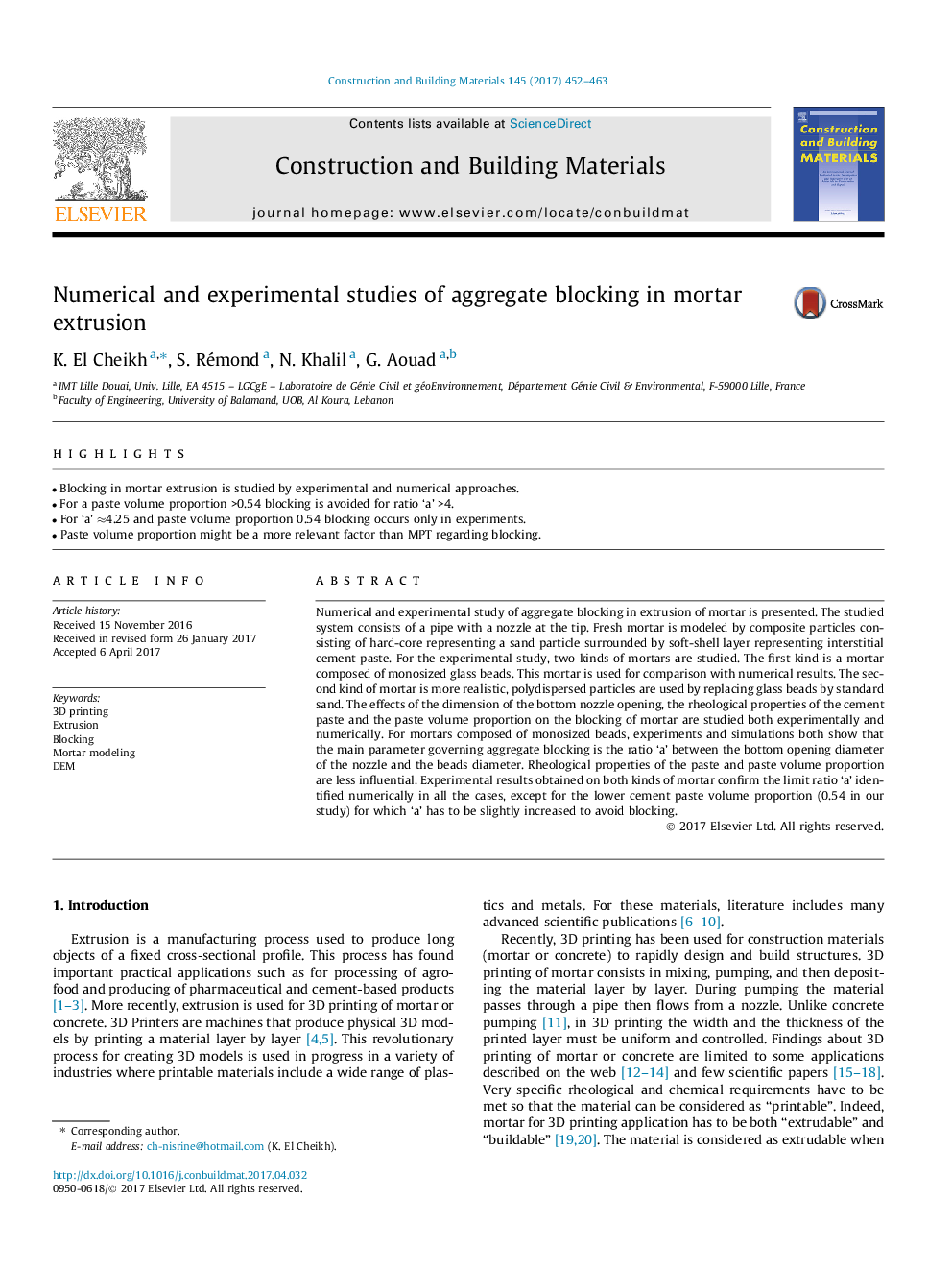| Article ID | Journal | Published Year | Pages | File Type |
|---|---|---|---|---|
| 4918405 | Construction and Building Materials | 2017 | 12 Pages |
Abstract
Numerical and experimental study of aggregate blocking in extrusion of mortar is presented. The studied system consists of a pipe with a nozzle at the tip. Fresh mortar is modeled by composite particles consisting of hard-core representing a sand particle surrounded by soft-shell layer representing interstitial cement paste. For the experimental study, two kinds of mortars are studied. The first kind is a mortar composed of monosized glass beads. This mortar is used for comparison with numerical results. The second kind of mortar is more realistic, polydispersed particles are used by replacing glass beads by standard sand. The effects of the dimension of the bottom nozzle opening, the rheological properties of the cement paste and the paste volume proportion on the blocking of mortar are studied both experimentally and numerically. For mortars composed of monosized beads, experiments and simulations both show that the main parameter governing aggregate blocking is the ratio 'a' between the bottom opening diameter of the nozzle and the beads diameter. Rheological properties of the paste and paste volume proportion are less influential. Experimental results obtained on both kinds of mortar confirm the limit ratio 'a' identified numerically in all the cases, except for the lower cement paste volume proportion (0.54 in our study) for which 'a' has to be slightly increased to avoid blocking.
Keywords
Related Topics
Physical Sciences and Engineering
Engineering
Civil and Structural Engineering
Authors
K. El Cheikh, S. Rémond, N. Khalil, G. Aouad,
